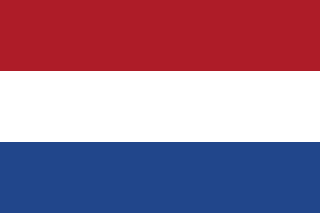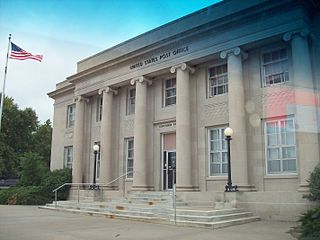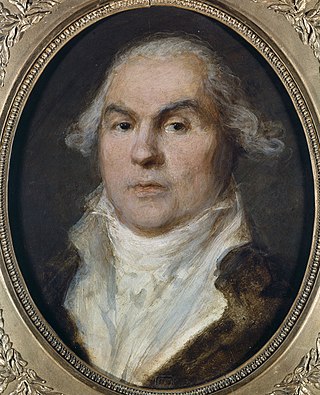
The Kingdom of Holland was the successor state of the Batavian Republic. It was created by Napoleon Bonaparte in March 1806 in order to strengthen control over the Netherlands by replacing the republican government with a monarchy. Since becoming emperor in 1804, Napoleon sought to extirpate republican tendencies in territories France controlled, and placed his third brother, Louis Bonaparte, on the throne of the puppet kingdom. The name of the leading province, Holland, now designated the whole country. In 1807, East Frisia and Jever were added to the kingdom.

Jérôme-Napoléon Bonaparte was the youngest brother of Napoleon I and reigned as Jerome Napoleon I, King of Westphalia, between 1807 and 1813.

Napoleon III was President of France from 1848 to 1852 and then Emperor of the French from 1852 until his deposition in 1870. He was the first president, second emperor, and last monarch of France.

Joséphine Bonaparte was the first wife of Emperor Napoleon I and as such Empress of the French from 18 May 1804 until their marriage was annulled on 10 January 1810. As Napoleon's consort, she was also Queen of Italy from 26 May 1805 until the 1810 annulment. She is widely known as Joséphine de Beauharnais.

The Hôtel des Invalides, commonly called Les Invalides, is a complex of buildings in the 7th arrondissement of Paris, France, containing museums and monuments, all relating to the military history of France, as well as a hospital and an Old Soldiers' retirement home, the building's original purpose. The buildings house the Musée de l'Armée, the museum of the Army of France, the Musée des Plans-Reliefs, and the Musée d'Histoire Contemporaine. The complex also includes the Cathedral of Saint-Louis-des-Invalides, the national cathedral of the French military. It is adjacent to the Royal Chapel known as the Dôme des Invalides, the tallest church building in Paris at a height of 107 meters. The latter has been converted into a shrine to some of France's leading military figures, most notably the tomb of Napoleon.

Napoleon Bonaparte, later known by his regnal name Napoleon I, was a French military officer and statesman who rose to prominence during the French Revolution and led a series of successful campaigns across Europe during the French Revolutionary and Napoleonic Wars from 1796 to 1815. He was the leader of the French Republic as First Consul from 1799 to 1804, then of the French Empire as Emperor of the French from 1804 to 1814, and briefly again in 1815.

Cloud County is a county located in the U.S. state of Kansas. Its county seat and most populous city is Concordia. As of the 2020 census, the county population was 9,032. The county was named after William Cloud, an officer in the American Civil War.

Concordia is a city in and the county seat of Cloud County, Kansas, United States. It is located along the Republican River in the Smoky Hills region of the Great Plains in North Central Kansas. As of the 2020 census, the population of the city was 5,111. Concordia is home of the Cloud County Community College and the Nazareth Convent and Academy.

André Masséna, Prince of Essling, Duke of Rivoli, was a French military commander during the French Revolutionary Wars and the Napoleonic Wars. He was one of the original 18 Marshals of the Empire created by Napoleon I. He was nicknamed l'Enfant chéri de la Victoire. He is considered to be one of the greatest generals of the Revolutionary and Napoleonic Wars.

Jean-Jacques-Régis de Cambacérès, Duke of Parma, was a French nobleman, lawyer, freemason and statesman during the French Revolution and the First Empire. He is best remembered as one of the authors of the Napoleonic Code, which still forms the basis of French civil law and French-inspired civil law in many countries.

Antoine-Jean Gros was a French painter of historical subjects. He was granted the title of Baron Gros in 1824.

The Palais-Royal is a former French royal palace located on Rue Saint-Honoré in the 1st arrondissement of Paris. The screened entrance court faces the Place du Palais-Royal, opposite the Louvre. Originally called the Palais-Cardinal, it was built for Cardinal Richelieu from about 1633 to 1639 by architect Jacques Lemercier. Richelieu bequeathed it to Louis XIII, before Louis XIV gave it to his younger brother, Philippe I, Duke of Orléans. As the succeeding Dukes of Orléans made such extensive alterations over the years, almost nothing remains of Lemercier's original design.

The Italian campaigns of the French Revolutionary Wars (1792–1801) were a series of conflicts fought principally in Northern Italy between the French Revolutionary Army and a Coalition of Austria, Russia, Piedmont-Sardinia, and a number of other Italian states.

Napoleon Bonaparte Brown was an American businessman and politician who lived in Kansas and Missouri in the late 19th and early 20th centuries. He is most known as the namesake and builder of the Brown Grand Theatre in Concordia, Kansas.
Robert E. Pearson was a movie director, writer, and painter. He was involved in over 100 films.

The Brown Grand Theatre is a community-based historical theatre located in Concordia, Kansas and is listed on the National Register of Historic Places. The theatre has been called "the most elegant theater between Kansas City and Denver" and to this day plays host to many popular events in the region.

Napoleon Crossing the Alps is a series of five oil on canvas equestrian portraits of Napoleon Bonaparte painted by the French artist Jacques-Louis David between 1801 and 1805. Initially commissioned by the King of Spain, the composition shows a strongly idealized view of the real crossing that Napoleon and his army made along the Alps through the Great St Bernard Pass in May 1800.

Bonaparte Crossing the Alps is a 1848–1850 oil painting by French artist Paul Delaroche. The painting depicts Napoleon Bonaparte leading his army through the Alps on a mule,[I] a journey Napoleon and his army of soldiers made in the spring of 1800 in an attempt to surprise the Austrian army in Italy. Several versions of this painting exist: in the Louvre- Lens and the Walker Art Gallery in Liverpool, England. Queen Victoria owned a small version of it.

Bonaparte, First Consul is an 1804 portrait of Napoleon Bonaparte as First Consul by Jean-Auguste-Dominique Ingres. The painting is now in the collection of the Curtius Museum in Liège. Posing the hand inside the waistcoat was often used in portraits of rulers to indicate calm and stable leadership.


















